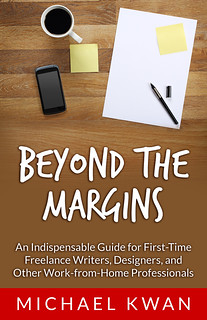When you were little, I’m sure like most kids you probably wondered where babies came from. You probably asked your parents and they told you about a pelican with a bundled up baby being left on the doorstep. As if to suggest that babies appear out of thin air. I guess parents still don’t feel confident that kids would understand or perhaps they feel insecure about letting their kids know about the facts. This is very reminiscent of the story of money.
We go to work and get a pay cheque, deposit it, and we now have money. It’s hard to stop and think to yourself about where it comes from. But in order to understand the financial landscape of the world, this gap in knowledge must be filled. Because of our dependence, we seriously need to understand money itself and where it comes from.
Simplicity and Bizarreness All In One
If you don’t understand right away, don’t worry, because money creation is well and truly a bizarre thing to ponder, let alone accept. It’s actually a really simple process, but the unfamiliarity and the way it violates our intuitive sense of the relationship we have with money make it difficult to accept. The most bizarre and difficult thing to accept is that money is made out of thin air.
The Houdinis Of Finance
The first way money is created is by the banks. In an earlier post, we looked at the fractional banking system and how it creates money through lending. Just to sum up, you make money at work and put it in the bank. The bank can now take that money and lend it out to a borrower. That borrower puts it into another bank, which then loans out to another borrower. By the time you’re done with it, you’ve potentially inflated the amount of money in the books by ten fold. And that’s not even including interest.
This is how banks survive, since banks don’t make money by holding it, but rather by lending it and making revenue through interest payments. The main idea in all this is that no matter where money started, it is loaned into existence. Conversely, when the loan is paid back, that money then disappears.
Now going back to interest for a second, if we don’t have enough money on hand to pay back the original loaned amount, how is it possible to make good with interest tacked on? In fact if it weren’t for interest, through discipline we could actually back track our way to a good standing on all debt. But I digress. There is another question to consider when considering where money comes from. Remember the money you were originally paid from work and deposited in the banks? Where did that originally come from?
Financial Vertigo
Here’s where things get tricky. Remember that it’s not hard to understand. It’s actually quite simple. It’s just SO simple that the mind is confused.
As we just went over, the first way money comes into existence is through banks giving credit. The other way is at the federal level. Our government has NO money on hand. It literally lives hand to mouth. It has, on average, a few weeks’ worth of money and it has to constantly request more money from our department of finance or treasury or whatever your country has. So, what the treasury does is prints up a stack of bonds.
Bonds are auctioned off, a vast majority of which are bought by large banks. Bonds have three components: a face value of how much it’s sold for; a maturity date, for when the bond will be paid back; and an interest rate, which will be paid on top of the face value as a thank you for loaning your money to the government. The entities that bought these bonds then give their money to the central bank, which then gives it to the government for spending.
Now that we have all these pieces in place, there’s one last component and that’s the central bank. The central bank buys these bonds from the big banks and then THEY print off the money to give the banks. So, like magic, magic literally comes out of thin air. Now if you know me, you know I like gold and silver. Their value is solid since there is a finite amount of it of the world. When a dollar is backed against nothing, the value is variable… and indefinitely fading.
The Creation of Money
I’d like to leave you with a quote from a Federal Reserve publication called Putting It Simply:
When you or I write a cheque, there must be sufficient funds to cover the cheque. But when the Federal Reserve writes a cheque, there is no bank deposit on which that cheque is drawn. When the Federal Reserve writes a cheque, it is creating money.”
If you got it, then congratulations. Although simple, it’s not easy to understand how money is created.






Recent Comments